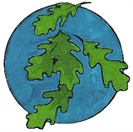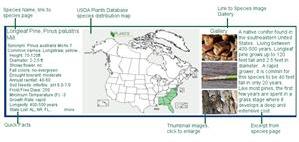

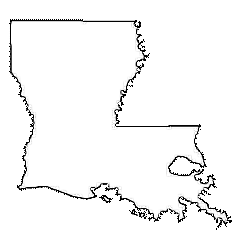
Louisiana
State Tree: Baldcypress
The Bayou State, 'Union, Justice, and Confidence'

Want to add your tree to our picture gallery? Click here for details!
-Color denotes a tree that is rare or endangered

- Trees
- A-Z scientific
- A-Z by Common Name
- Families
- Aceraceae Maple Family
- Anacardiaceae Sumac Family
- Annonaceae Custard Apple Family
- Aquifoliaceae Holly Family
- Arecaceae, Palm Family
- Betulaceae Birch family
- Bignoniaceae Trumpet Creeper Family
- Burseraceae Frankincense Family
- Caprifoliaceae Honeysuckle Family
- Chrysobalanaceae Coco-plum Family
- Cornaceae Dogwood Family
- Cupressaceae Cypress Family
- Cyrillaceae Cyrilla Family
- Ebenaceae Ebony Family
- Ericaceae Heath Family
- Fabaceae Pea Family
- Fagaceae Beech Family
- Hamamelidaceae Witch Hazel Ffamily
- Hippocastanaceae Horse Chestnut Family
- Juglandaceae Walnut Family
- Lauraceae Laurel Family
- Leitneriaceae Corkwood Family
- Magnoliaceae Magnolia Family
- Meliaceae Mahogany Family
- Moraceae Mulberry Family
- Myricaceae Bayberry Family
- Myrsinaceae Myrsine Family
- Myrtaceae Myrtle Family
- Nyctaginaceae Four Oclock Family
- Olacaceae Olax Family
- Oleaceae Olive Family
- Pinaceae Pine Family
- Platanaceae Plane Tree Family
- Polygonaceae Buckwheat Family
- Rhamnaceae Buckthorn Family
- Rosaceae Rose Family
- Rubiaceae Madder Family
- Rutaceae Rue Family
- Salicaceae Willow Family
- Sapindaceae Soapberry Family
- Sapotaceae Sapodilla Family
- Simaroubaceae Quassia Family
- Styracaceae Storax Family
- Symplocaceae Sweetleaf Family
- Theaceae Tea Family
- Tiliaceae Lindon Family
- Ulmaceae Elm Family
- Taxaceae Yew Family
- Yucca Family
- Browse by State
- Rare or Endangered Species
- Trees_with_Special_Uses
- Tallest and Biggest
- Noxious Weeds
- Causes
- About Us
- Our Stores


™

Native Trees of Louisiana

Custom Search
We are part of the Hubpages community.
Click here for more info.
Click here for more info.
Home>Browse by State>Louisiana
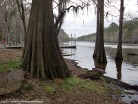
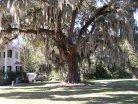
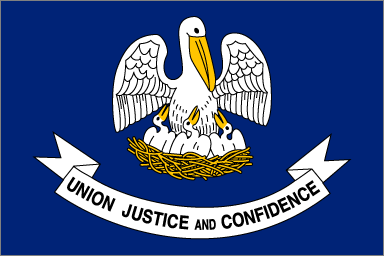
When most people think of Louisiana, they think swamps. They wouldn't be wrong but along with the famous swamp lands of this coastal state, there are rare prairie habitats, rolling hills, pine forests and spectacular beaches.
Perhaps the most iconic tree of Louisiana is the baldcypress. Also the official State Tree, baldcypress trees are found in wetlands of all types and are an important component of the forests. Those venturing near the water for world class fishing or hoping for a crawfish boil later, will undoubtedly
Perhaps the most iconic tree of Louisiana is the baldcypress. Also the official State Tree, baldcypress trees are found in wetlands of all types and are an important component of the forests. Those venturing near the water for world class fishing or hoping for a crawfish boil later, will undoubtedly

pass by some of these native giants. Southern magnolias are also common throughout
Louisiana, so much so that their large white flowers are the State Flower. The rivers,
streams, lakes, bogs, and swamps give rise to diverse bottomland forests. Covering about
half the state, timber is one of the leading industries of Louisiana and is the number one crop.
The landscape of Louisiana has much to offer the nature lover. The adventurous type may
want to explore the the Atchafalaya Basin, which is the nationís largest river swamp. Over
550,000 acres in size, the basin is actually larger than the Florida Everglades and contains
some of North America's most important cypress-tupelo swamps, bottomland forests, lakes
and waterways. Louisiana also offers the chance to see other rare or endangered
ecosystems such as coastal and calcareous prairies and hillside seepage bogs.
With such habitat diversity and plentiful bodies of water, Louisiana is also a mecca for bird
watchers. In fact, John James Audubon spent much of his time studying birds here.
Hundreds of native and migratory species of sea birds, waterfowl, woodpeckers, hawks, and
many more can be viewed. Agricultural and urban development has had a negative impact on
the bird populations as well as the forests. Many of the species are now endangered or
threatened due to habitat loss. There are 23 species of trees listed in Louisiana with element
ranking between S1 and S3, meaning rare or imperiled, and a few ecosystems listed as G1-
globally imperiled.
One of the few deciduous conifer species in the world, Taxodium distichum, or baldcypress, was made the State Tree of Louisiana in 1963.
Baldcypress on the Texas-Louisiana border.
Taxodium distichum ©2012 TreesForMe Original Image.
See usage requirements.
may reach 100 to 130 feet in height. A long lived tree species, it is not uncommon to
find individuals over 500 years old in old growth forests. In the spring, before the new
leaves begin to bud, green 'flowers' bloom near twig tips, hanging in a tassel like
structure. Soon after, the small, alternate and yellowish green linear leaves appear.
Baldcypress are essential to southeastern wetland areas. They help reduce damage
from flooding, assist with riverbank erosion control, and remove pollutants and
sediments from the water.
Louisiana Native Tree Facts

Forested acres: 14 million
Percent of total area forested: 50%
Predominant Forest Type: Oak-Gum-Cypress, Loblolly-Shortleaf Pine
Number of National Forests: 1
Number of State Parks: 22
Number of Tree city USA communities: 16
Number of invasive tree species: 14 (see state list for noxious/invasive plants)
Insects of Concern: Emerald Ash Borer, Southern Pine Beetle, Pine Engraver Beetle, Tent Catepillar
Pathogens of Concern: Dutch Elm Disease, Fusiform Rust (pines), Sudden Oak Death, Thousand Canker (walut)
Number or Rare, Threatened or Endangered Species: 23
Number of tree families in our collection: 37
Sources:
Arborday.org
US Forest Service
Louisiana Department of Forestry and Agriculture
Louisiana Secretary of State
United States Department Of Agriculture, Natural Resources Conservation Services: PLANTS Database
Additional state resources:
Louisiana Department of Wildlife and Fisheries
Louisiana State Parks
LSU AgCenter: Research and Extension
Percent of total area forested: 50%
Predominant Forest Type: Oak-Gum-Cypress, Loblolly-Shortleaf Pine
Number of National Forests: 1
Number of State Parks: 22
Number of Tree city USA communities: 16
Number of invasive tree species: 14 (see state list for noxious/invasive plants)
Insects of Concern: Emerald Ash Borer, Southern Pine Beetle, Pine Engraver Beetle, Tent Catepillar
Pathogens of Concern: Dutch Elm Disease, Fusiform Rust (pines), Sudden Oak Death, Thousand Canker (walut)
Number or Rare, Threatened or Endangered Species: 23
Number of tree families in our collection: 37
Sources:
Arborday.org
US Forest Service
Louisiana Department of Forestry and Agriculture
Louisiana Secretary of State
United States Department Of Agriculture, Natural Resources Conservation Services: PLANTS Database
Additional state resources:
Louisiana Department of Wildlife and Fisheries
Louisiana State Parks
LSU AgCenter: Research and Extension
Louisiana Native Tree Families and Genera

Useful information while browsing species:
• How to read a botanical name
• How to use our species boxes:
• How to read a botanical name
• How to use our species boxes:
Additional Resources:
North American Native Tree Families
North American A to Z List by Scientific Name
North American A to Z List by Common Name
North American Native Tree Families
North American A to Z List by Scientific Name
North American A to Z List by Common Name
click to enlarge.
-Color denotes a tree that is rare or endangered

Please note: This is not a complete list of all native tree families and species found in Louisiana. We are constantly working towards a more comprehensive list and will add families and their species as completed.
Follow the links to view species native to Louisiana. If the genus is not linked, species are listed on the family page.
Aceraceae, Maple
Aquifoliaceae, Holly
Anacardiaceae, Sumac
Rhus, Sumac
Toxicodendron, Poison Sumac
Annonaceae, Custard-apple
Arecaceae, Palm
Betulaceae, Birch
Betula, Birch
Carpinus, Hornbeam
Corylus, Hazelnut
Ostrya, Hophornbeam
Bignoniaceae, Trumpet Creeper
Caprifoliaceae, Honeysuckle
Cornaceae, Dogwood
Cornus, Dogwood
Nyssa, Tupelo
Cyrillaceae, Cyrilla
Cliftonia, Cliftonia
Cupressaceae- Cypress
Juniperus, Juniper
Taxodium, Baldcypress
Aceraceae, Maple
Aquifoliaceae, Holly
Anacardiaceae, Sumac
Rhus, Sumac
Toxicodendron, Poison Sumac
Annonaceae, Custard-apple
Arecaceae, Palm
Betulaceae, Birch
Betula, Birch
Carpinus, Hornbeam
Corylus, Hazelnut
Ostrya, Hophornbeam
Bignoniaceae, Trumpet Creeper
Caprifoliaceae, Honeysuckle
Cornaceae, Dogwood
Cornus, Dogwood
Nyssa, Tupelo
Cyrillaceae, Cyrilla
Cliftonia, Cliftonia
Cupressaceae- Cypress
Juniperus, Juniper
Taxodium, Baldcypress
Ebenaceae, Ebony
Diospyros, Persimmon
Ericaceae, Heath
Fabaceae, Pea
Gleditsia, Locust
Fagaceae, Beech
Quercus, Oak
Hamamelidaceae, Witch-hazel
Hippocastanaceae, Horse-chestnut
Juglandaceae, Walnut
Carya, Hickory
Juglans, Walnut
Lauraceae, Laurel
Magnoliaceae, Magnolia
Moraceae, Mulberry
Myricaceae, Bayberry
Oleaceae, Olive
Fraxinus, Ash
Pinaceae, Pinus
Pinus, Pine
Platanaceae, Plane-tree
Platanus, Sycamore
Diospyros, Persimmon
Ericaceae, Heath
Fabaceae, Pea
Gleditsia, Locust
Fagaceae, Beech
Quercus, Oak
Hamamelidaceae, Witch-hazel
Hippocastanaceae, Horse-chestnut
Juglandaceae, Walnut
Carya, Hickory
Juglans, Walnut
Lauraceae, Laurel
Magnoliaceae, Magnolia
Moraceae, Mulberry
Myricaceae, Bayberry
Oleaceae, Olive
Fraxinus, Ash
Pinaceae, Pinus
Pinus, Pine
Platanaceae, Plane-tree
Platanus, Sycamore
Rhamnaceae, Buckthorn
Rosaceae, Rose
Crataegus, Hawthorn
Prunus, Plum/Cherry
Rubiaceae, Madder
Rutaceae, Rue
Salicaceae, Willow
Populus, Cottonwood
Salix, Willow
Sapindaceae, Soapberry
Sapotaceae, Sapodilla
Styracaceae, Storax
Halesia, Silverbell
Symplocaceae, Sweetleaf
Tiliaceae, Lindon
Tilia, Basswood
Ulmaceae, Elm
Celtis, Hackberry
Ulmus, Elm
Yucca, Yucca
Rosaceae, Rose
Crataegus, Hawthorn
Prunus, Plum/Cherry
Rubiaceae, Madder
Rutaceae, Rue
Salicaceae, Willow
Populus, Cottonwood
Salix, Willow
Sapindaceae, Soapberry
Sapotaceae, Sapodilla
Styracaceae, Storax
Halesia, Silverbell
Symplocaceae, Sweetleaf
Tiliaceae, Lindon
Tilia, Basswood
Ulmaceae, Elm
Celtis, Hackberry
Ulmus, Elm
Yucca, Yucca
especially vulnerable to extirpation.
• S2 = imperiled in Louisiana because of rarity (6 to 20 known
• S3 = rare and local throughout the state or found locally (even abundantly at some of its locations) in a restricted region of the state,
or because of other factors making it vulnerable to extirpation (21 to 100 known extant populations)
• S4 = apparently secure in Louisiana with many occurrences (100 to 1000 known extant populations)
• S5 = demonstrably secure in Louisiana (1000+ known extant populations)(B or N may be used as qualifier of numeric ranks and
indicating whether the occurrence is breeding or nonbreeding)
• SA = accidental in Louisiana, including species (usually birds or butterflies) recorded once or twice or only at great intervals
hundreds or even thousands of miles outside their usual range
• SH = of historical occurrence in Louisiana, but no recent records verified within the last 20 years; formerly part of the established
biota, possibly still persisting
• SR = reported from Louisiana, but without conclusive evidence to accept or reject the report
• SU = possibly in peril in Louisiana, but status uncertain; need more information
• SX = believed to be extirpated from Louisiana
• SZ = transient species in which no specific consistent area of occurrence is identifiable
Protected Status:
Endangered = Taking or harassment of these species is a violation of state and federal laws.
Threatened = Taking or harassment of these species is a violation of state and federal laws.
Threatened/Endangered = Taking or harassment of these species is a violation of state and federal laws.
Prohibited = Possession of these species is prohibited. No legal harvest or possession.
Restricted Harvest = There are restrictions regarding the taking and possession of these species.
Rare or otherwise classified tree species present in Louisiana:
S1 Species
Ilex myrtifolia, Myrtle Holly
Corylus americana, American Hazelnut
Cliftonia monophylla, Buckwheat tree
Cladrastis kentukea, Yellowwood
Castanea pumila var. ozarkensis, Ozark Chinquapin
Quercus imbricaria, Shingle Oak
Quercus laevis, Turkey Oak
Quercus macrocarpa, Burr Oak
Quercus oglethorpensis, Oglethorpe's Oak
Quercus sinuata var. sinuata, Durandís White Oak
Lindera subcoriacea, Bog spicebush
Crataegus triflora, Three-flowered hawthorn
Zanthoxylum americanum, Northern Prickly Ash, Common Prickly Ash
Salix caroliniana, Coastal Plain Willow
Serenoa repens, Saw palmetto
Quercus rubra, Red Oak (S1S3)
Louisiana has two sets of plant classification or status.
Currently only the 'S' classifications have been assigned. The
classifications and their criteria are as follows:
Element Rankings:
• S1 = critically imperiled in Louisiana because of extreme rarity (5 or
fewer known extant populations) or because of some factors making it
Louisiana Endangered or Threatened Tree Species

Looking for a nursery near you?
Check out our nursery listing by county below!
Sorry, we do not currently have any tree nursery listings for this state. We do update these lists, so please check back.
Check out our nursery listing by county below!
Sorry, we do not currently have any tree nursery listings for this state. We do update these lists, so please check back.



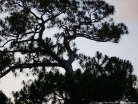
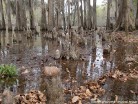

S2 Species
Carya pallida, Sand hickory
Ilex amelanchier, Sarvis Holly
Magnolia pyramidata, Pyramid Magnolia
Quercus arkansana, Arkansas Oak
Quercus coccinea, Scarlet Oak (S2S3)
S3 Species
Kalmia latifolia, Mountain Laurel
SH Species
Lindera melissifolia, Pondberry, southern spicebush
Carya pallida, Sand hickory
Ilex amelanchier, Sarvis Holly
Magnolia pyramidata, Pyramid Magnolia
Quercus arkansana, Arkansas Oak
Quercus coccinea, Scarlet Oak (S2S3)
S3 Species
Kalmia latifolia, Mountain Laurel
SH Species
Lindera melissifolia, Pondberry, southern spicebush
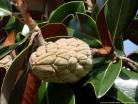
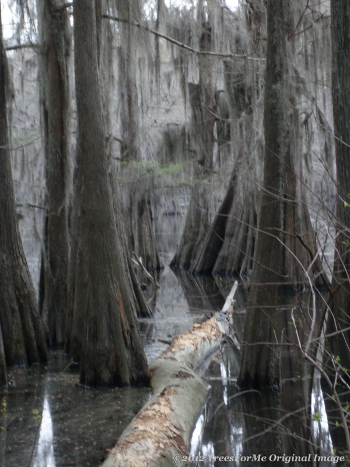
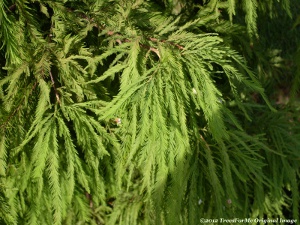
Taxodium distichum has needle like leaves.
©2012 TreesForMe Original Image. See usage requirements.
Found across the state along
swamps, bayous, lakes, and
marshes, baldcypress are easily
identifiable by their buttressed
trunks, knobby knees, and
aptitude for growing with their
bases submerged. Along the
Louisiana-Texas border on Caddo
Lake, grows the largest
baldcypress forest remaining in
the world. The forest, half in
Louisiana and half in Texas, is
internationally protected and
houses some of the oldest bald-
cypress trees in North America.
The large trunks can grow 3 to 6
feet in diameter and mature trees
Tree lists:
•A-Z by scientific
name
•A-Z by common
name
•By Family
For state A-Z list click state name below.
•A-Z by scientific
name
•A-Z by common
name
•By Family
For state A-Z list click state name below.


